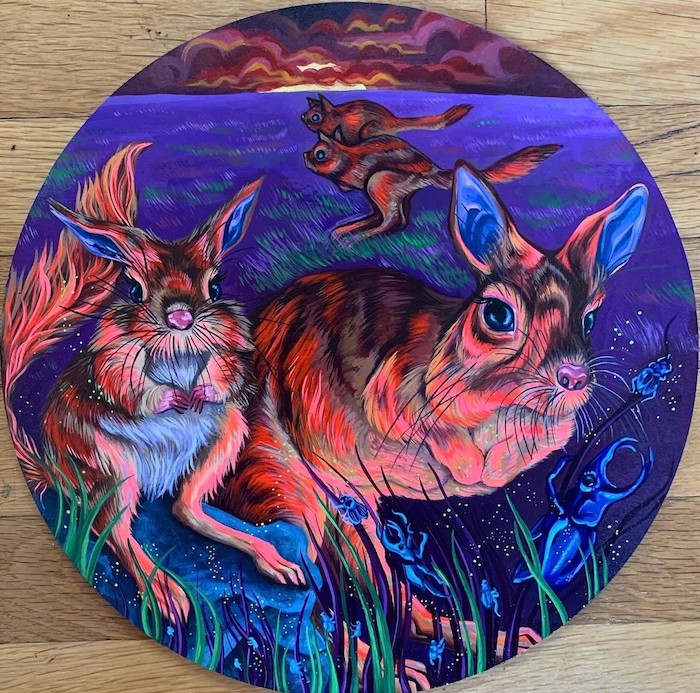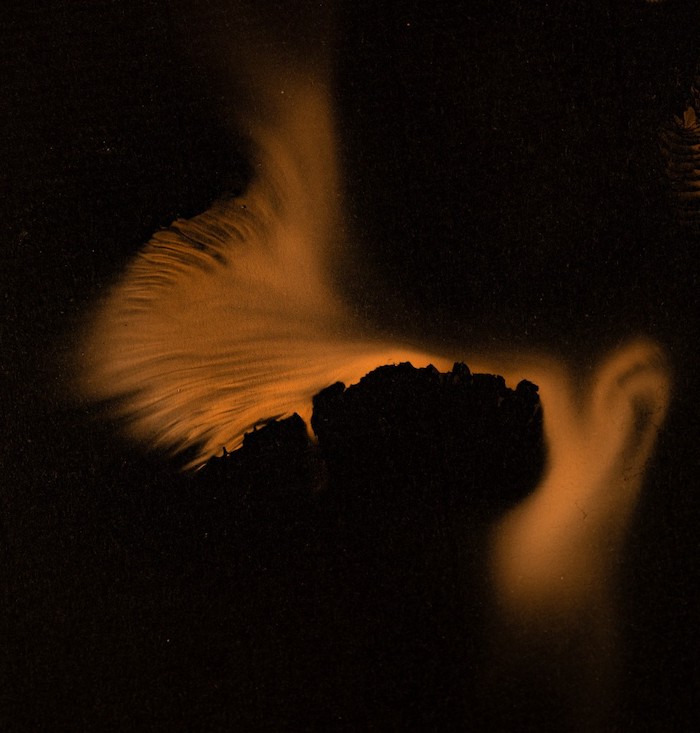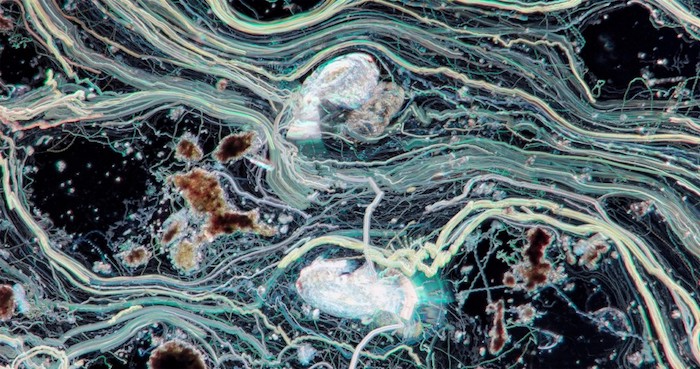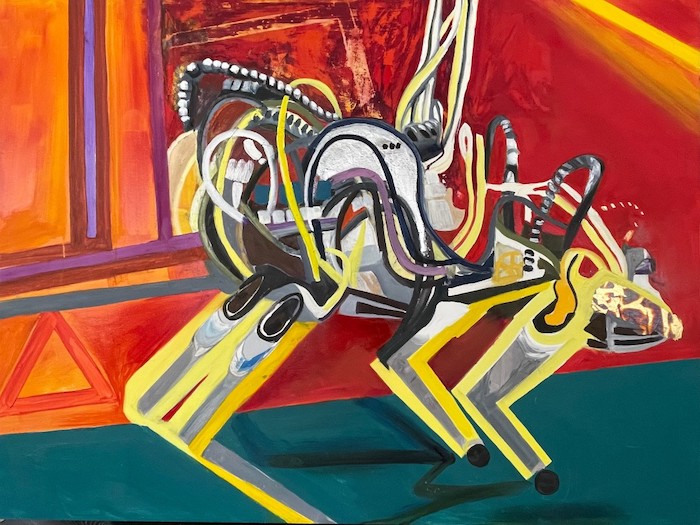
The following announcement was provided by the Mosesian Center for the Arts:
The Mosesian Center for the Arts is excited to showcase a variety of artworks that are inspired by science. Artists and scientists are alike in many ways. Both are known for their creativity, careful observation of the world around them and a big dose of determination. Both the artists and the scientists spend a long time in pursuit of their calling. They engage in research, enjoy the process, and learn to navigate the long road from the initial idea to the outcome.
Linda Goodwin’s Touch is a photograph of a mushroom spore print. Mushroom spore prints are used to identify wild mushrooms. The artist describes the process: “ We forage wild mushrooms, modify air flow, temperature, humidity & time to create unique images. But spores are living materials that can fade with time, so we photograph and make enlarged, full-color pigment ink prints on archival, museum-quality paper in small, limited editions. We purposely include the ‘imperfections’ e.g. tracks made by larvae & other tiny creatures (our collaborators) who live within the mushroom. None of our images are AI- or computer-generated.”

Jess Holz’s Plankton Painting 7/27/24 #7: Arnold Arboretum was created with video of pond water from Arnold Arboretum in Boston, taken through a light microscope. The artist explains:
”The video is algorithmically summed, like a long exposure, revealing the trails and paths of myriads of microscopic creatures (plankton) swimming on the slide. I consider these images like automatic drawings or paintings, the plankton create the marks and composition, all happening within a millimeter or less. Chronophotography allows us to see these creatures ‘footprints’, instead of a giant footprint in the dirt, there is a small squiggle. Some dart across the frame in less than a second, others carve slower, helical paths. They are always seeking, striving, looking for food and mates. Plankton are the second most abundant form of life on earth and form the basis of the food chain but are so tiny they’re often overlooked. By visualizing them and celebrating their vitality I hope to raise awareness of the impact humans are having on these unseen beings.”

Sharon Stanczak’s painting Cheetah on Treadmill is inspired by the Cheetah family of robots developed by the MIT lab of Dr. Sangbae Kim. The artist visited his lab in the summer of 2023 where she executed several drawings that served as the preparation for her large oil on panel painting.

Eliza Brown’s Ultraviolet Springhare reflects the artist’s interest in learning about different animal species that have been discovered to glow bio-fluorescent under uv light. The artist writes: “This trait is more commonly found in fish, birds and amphibians, but scientists have discovered similar traits in some nocturnal mammals. It’s still unknown as to why this happens, but it’s speculated that this may be to ward off predators, to help the mammals see each other in the darkness, or look for healthy potential mates. Springhares are found in South Africa.”
Vision and Process: Art Inspired by Science is on display at the Mosesian Center for the Arts from November 15 – January 3, 2025. The opening reception will be held on November 21, 5:30 – 7:30 PM.
The mission of The Mosesian Center for the Arts is to enrich the lives of diverse audiences and participants by providing exceptional experiences in theater, visual, and literary art.
Find out more at www.mosesianarts.org